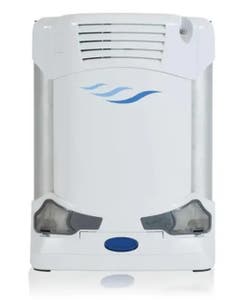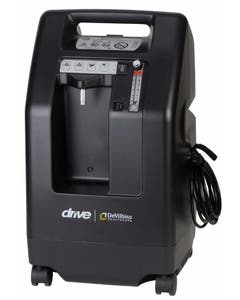While we all have our seasonal weather preferences, people with chronic obstructive pulmonary disease (COPD) have extra reason to follow weather forecasts. Extreme temperatures, humidity levels and even passing thunderstorms all can cause COPD symptoms to flare. Understanding how weather can trigger your symptoms — and how to reduce your risks — are important steps in staying healthy in all kinds of weather.


Cold Fronts
If you reside in a cold weather climate, you can thankfully prepare your COPD ahead of time for seasonally cold weather.
When the thermometer dips below 32 degrees F, humidity levels fall, as well. Humidity levels below 10% can dry out mucous membranes. Such dry air can irritate airways, which can cause symptoms to flare. Low humidity also makes it harder for the membranes to produce the fluid they need to move viruses and bacteria. Allergy symptoms also can be worse when membranes are dry. As a result, the risk of both lung infections and allergies rises in cold, dry conditions.
How To Prepare For It
- If you need to be outside during cold, dry weather, wear a scarf over your mouth and nose. This will warm and humidify the air as you breathe in through your mouth to limit airway constriction
- Try to stay indoors during exceptionally cold weather
- Use a humidifier to prevent indoor warm air from becoming too dry
Hurricanes
Since hurricanes are made up of thunderstorms and other weather extremes, they can result in severe flooding. Flash floods can cause damage to homes and other buildings. It also could result in people living in unsafe and unsanitary environments, as the flood water could have been mixed in with water from sewers or have been in contact with insects, rodents, and other animals. Even after the flooding is resolved, the leftover water damage could remain wet and moisturized, causing mold growth. This creates an unsafe living environment, as breathing in the mold is very dangerous.
On top of the flooding, water damage, and unsafe living conditions, hurricanes can also cause power outages for long periods of time. So, it is crucial for those who have COPD and other respiratory illnesses to be equipped with the proper oxygen equipment, including an oxygen concentrator and backup power supplies (batteries) so their treatment is readily available to them, regardless of it they are out of power.
How To Prepare For It
- Make sure important medications and other important items are stored in waterproof bags to keep them dry in case of flooding.
- Keep your oxygen concentrator and other oxygen equipment altogether and readily available in case of evacuation requirements.
- When the water from the flood has receded, schedule an inspector to check your residence for mold and/or other damage.
Heat Waves
When the weather outside gets extremely hot, people with COPD could experience flared up symptoms. When the outside air is mixed with a heat wave, COPD exacerbations can occur. That's because the chemical changes to the air from heat can worsen symptoms, irritating the lungs and more of people with COPD, asthma, and other illnesses.
Heat waves can also cause dehydration. This is a danger to people, especially those with illnesses, as it can result in an increase of lung infections and other ailments.
How To Prepare For It
- Ensure your air conditioning unit is working properly and use it to keep your house cool.
- Avoid physical activity.
- If you must go outdoors, stay in shaded areas.
- Drink lots of water.
Tornadoes
Tornadoes seem to occur more frequently in the recent years, so making sure you are prepared for them is vital. Tornadoes form from wind from a thunderstorm above and extends to the ground below. Tornadoes bring up an excessive amount of duster, water, and debris and cause damage to the areas where they occur. The dust and debris that mixes with the air worsens the air's quality, making it harder to breathe, especially for those with COPD.
Like hurricanes, tornadoes can also cause power outages so be sure you are prepared with the proper oxygen equipment and batteries.
How To Prepare For It
- Refrain from going outside if the air quality is bad.
- Have a good supply of food and water.
- Charge your backup power solutions in case of a power outage.
Dust Storms
Dust storms can be particularly harmful to those with COPD as dust from the ground is swept up into the clouds and air, causing bad air quality and airborne particles. Breathing in poor air and harmful particles can result in dust pneumonia, silicosis, and other respiratory infections. It also can cause irreversible lung damage. Additionally, dust storms in certain areas of the United States contain molds that are very dangerous to breathe in.
How to Prepare For It
- Wear an N95 face mask to avoid breathing in dust to protect your lungs
- If N95 masks are not available, use a scarf or your shirt to block your nose and mouth.
- Breathe through your nose to use your body's natural filtration.
Key Takeaways
While severe weather must be taken seriously by most people, it can have dire impact on someone with COPD. COPD patients must be prepared for the worst possible outcomes of a severe weather event. They know their climate best and should stock up with supplies and a plan when severe weather strikes. Paying attention to weather reports during seasonal severe weather can be the warning most COPD patients needs to stay safe and take necessary precautions for their sensitive health.
To get prepared for extreme weather conditions and you are in need of new oxygen products, visit The Oxygen Concentrator Supplies Shop today. We stock hundreds of items to help people with COPD and other respiratory illnesses continue living a healthy life. If you have any questions or would like to learn more about any of our products, give us a call at 888-941-1688 today!











